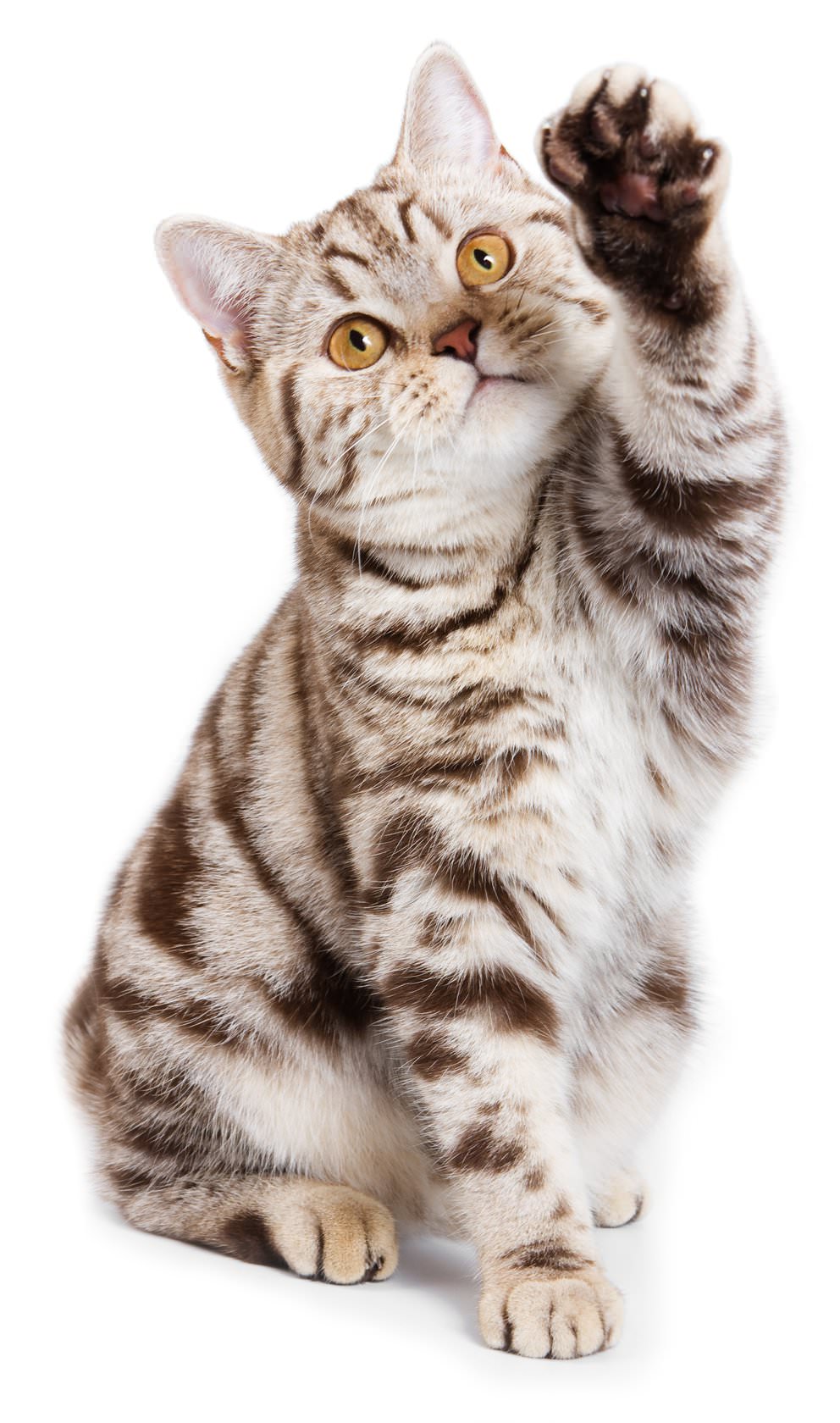
Why is protein so important for cats?
Cats are carnivores, designed to feed on small prey animals, and this has remained unchanged since before they were domesticated. It means that cats thrive on animal protein, and get little nutritional value from plant proteins such as soya.
What makes a good quality cat food?
Good quality cat food has a high animal protein content. As cats would naturally only ever consume a small amount of grain, they can only tolerate it in very small quantities. Cats cannot digest grains properly and this results in high levels of waste products in the cat’s system and can cause unnecessary pressure on their kidneys and digestion. A good cat food should only contain very limited amounts of plant-based ingredients.
How much food does my cat need?
How much food your cat needs depends on what type of food you are using, as well as on its age, breed, activity levels and feeding habits. Please check the packaging for feeding guidelines.
Cats are desert animals. Why do I still need to give my cat water?
Your cat’s ancient ancestors lived in the deserts of Africa, which means that the cat’s system is perfectly adapted to deriving all of the moisture that it needs from the small prey animals that it eats. Although the body of a mouse is up to 70% water, commercially produced cat foods do not have such a high moisture content, so you should ensure that your cat always has fresh water to drink, especially if you are feeding it dry food.
Why is taurine so important for cats?
Taurine is an essential amino acid. Cats are not able to effectively produce taurine themselves but rely on food to supply what they need. It is mainly present in red meat, but a mouse contains proportionally higher amounts of taurine than beef, for example. Taurine is vital for healthy heart function in cats, so a taurine deficiency can be fatal. A good complete cat food should be taurine-enriched, to make sure that your cat always gets the required amount.
Should I feed my cat wet or dry food?
Although cats do not naturally eat ‘dry’ food, that certainly does not mean that dry food is bad for your cat. Whether a food is species-appropriate for your cat or not depends entirely on the ingredients. When feeding your cat dry food, you should always ensure that it has a supply of fresh water available.
What is the difference between ‘complete’ and ‘supplementary’ food?
Complete foods contain all of the ingredients, vitamins and minerals that your cat requires for optimum nutrition. Supplementary foods are designed to enhance or complement your cat’s daily diet.
I would like to feed my cat a different food. How do I go about changing its diet?
Cats are well known for being sticklers for their preferred food, often ignoring any alternatives that are offered to them! If you want to change the food that you feed your cat, it is worth doing it step by step, to avoid your cat going hungry. At first, serve your cat a mix that contains approx. 10% new food, mixed in with the old food. The following day, increase the proportion of new food to around 20%, and so on, until the old food has been entirely replaced with the new alternative.
How many snacks are healthy for my cat?
Cat treats and snacks make a great reward for between meals, but they do not contain all of the nutrients that your cat needs, so should only be a small part of your cat’s daily nutrition. How many snacks you should feed depends on your cat’s age, breed and activity levels, as well as on their general feeding habits. The packaging offers further advice and tips.
What different types of cat litter are available?
Cat litter is available to buy in clumping and non-clumping varieties. The most popular type of clumping cat litter is bentonite or clay litter. This type of litter is made from natural clay, which softens in contact with liquid and then forms clumps, which are easy to remove from the litter tray with a scoop. Silicate cat litter is also becoming increasingly popular. The unique structure of silicate means that it absorbs odours and liquids very quickly, holding up to its own weight in liquid. Natural cat litters are made from 100% biodegradable materials, such as wood, paper, straw and other plant-based materials, and are available in clumping and non-clumping varieties.